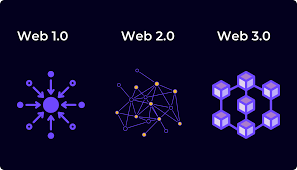Embracing the Future: A Dive into Web 3.0
 Rohan Kumar Chaudhary
Rohan Kumar Chaudhary
Greetings, fellow developers! 👋 In the ever-evolving landscape of the internet, a new era is upon us — Web 3.0. This paradigm shift promises to revolutionize the way we interact with the digital world, offering a decentralized, user-centric, and trustless environment.
What is Web 3.0?
Web 3.0 represents the next phase of the internet, characterized by decentralization, blockchain technology, and enhanced user control. Unlike its predecessors, Web 3.0 aims to empower users by giving them ownership of their data, breaking away from the centralized models that have dominated the web.
Key Components of Web 3.0
1. Decentralization:
Centralized systems have long been a point of vulnerability, leading to issues like data breaches and censorship. Web 3.0 leverages decentralized technologies, such as blockchain, to distribute control and eliminate single points of failure.
2. Blockchain Technology:
At the heart of Web 3.0 is blockchain — a distributed ledger that ensures transparency, security, and immutability. Smart contracts, powered by blockchain, enable trustless and automated transactions, opening up new possibilities for decentralized applications (DApps).
3. User Ownership and Control:
In Web 3.0, users are no longer mere consumers but active participants. They have control over their data and can choose when and how to share it. This shift towards user-centricity fosters a more transparent and equitable digital ecosystem.
Building Blocks of Web 3.0
1. Decentralized Identity:
Web 3.0 introduces the concept of self-sovereign identity, allowing users to have full control over their digital identity. This not only enhances privacy but also reduces the risk of identity theft.
2. Interoperability:
Web 3.0 promotes interoperability among different platforms and blockchains. This interoperability enables seamless communication between decentralized applications, paving the way for a more interconnected internet.
3. Tokenization:
The use of tokens is a fundamental aspect of Web 3.0. Tokens represent ownership or access rights and play a crucial role in decentralized ecosystems. Whether it's NFTs (Non-Fungible Tokens) or utility tokens, they contribute to the vibrant and decentralized economy.
Challenges and Opportunities
While Web 3.0 holds immense promise, it comes with its set of challenges. Scalability, user adoption, and regulatory considerations are areas that demand careful navigation. However, these challenges also present opportunities for developers and entrepreneurs to innovate and contribute to the growth of Web 3.0.
Getting Started with Web 3.0 Development
Excited to dive into Web 3.0 development? Here are a few resources to kickstart your journey:
Ethereum Developer Documentation
Web3.js Documentation
IPFS Documentation
Conclusion
Web 3.0 is not just a technological evolution; it's a paradigm shift towards a more inclusive, transparent, and user-centric internet. As developers, embracing this shift opens up a world of possibilities to build decentralized applications that redefine how we interact with digital platforms. The journey has just begun, and together, we're shaping the future of the internet.
Stay tuned for more explorations into the world of Web 3.0. Happy coding! 🚀
Subscribe to my newsletter
Read articles from Rohan Kumar Chaudhary directly inside your inbox. Subscribe to the newsletter, and don't miss out.
Written by

Rohan Kumar Chaudhary
Rohan Kumar Chaudhary
👋 Hello, I'm Rohan Kumar Chaudhary, a seasoned developer with a passion for crafting both frontend and backend solutions. With a wealth of experience in the dynamic world of web development, I've had the privilege of contributing my skills to various companies.